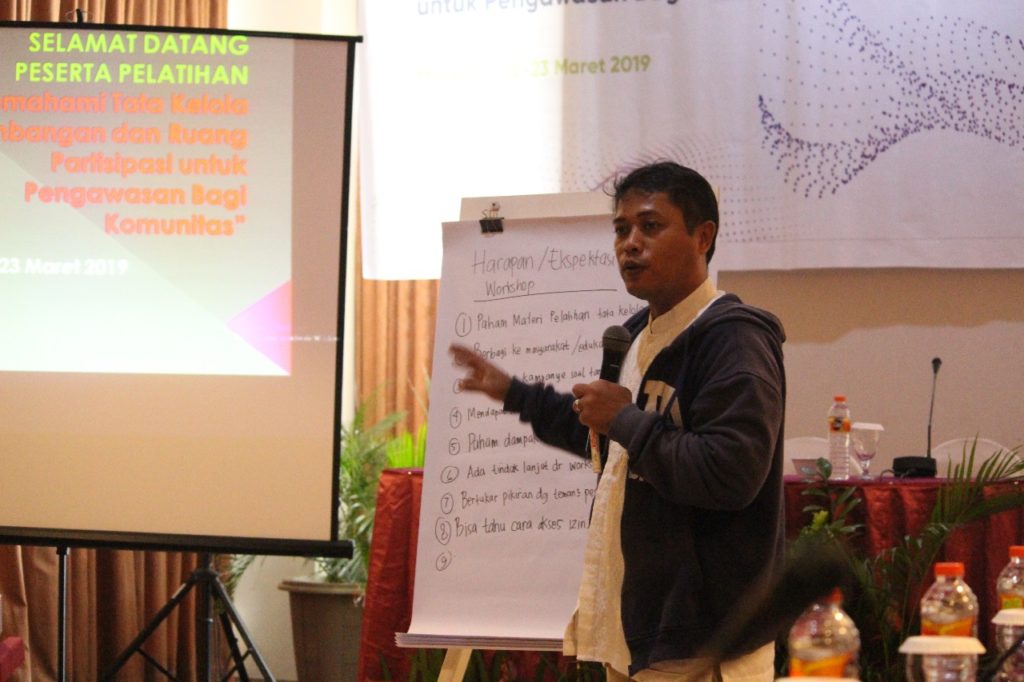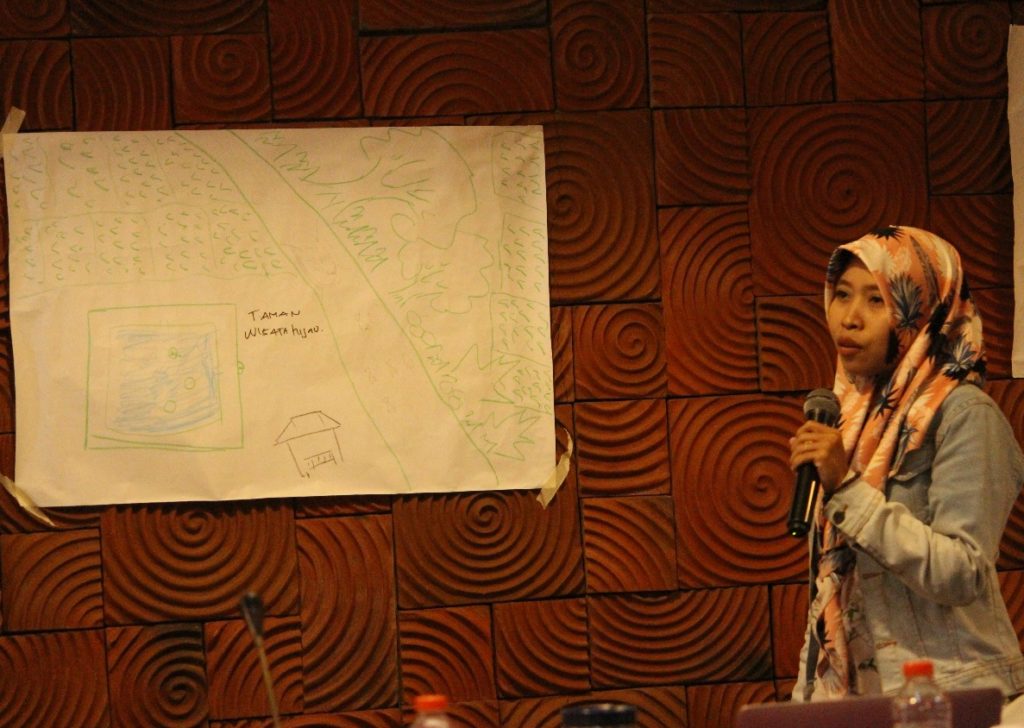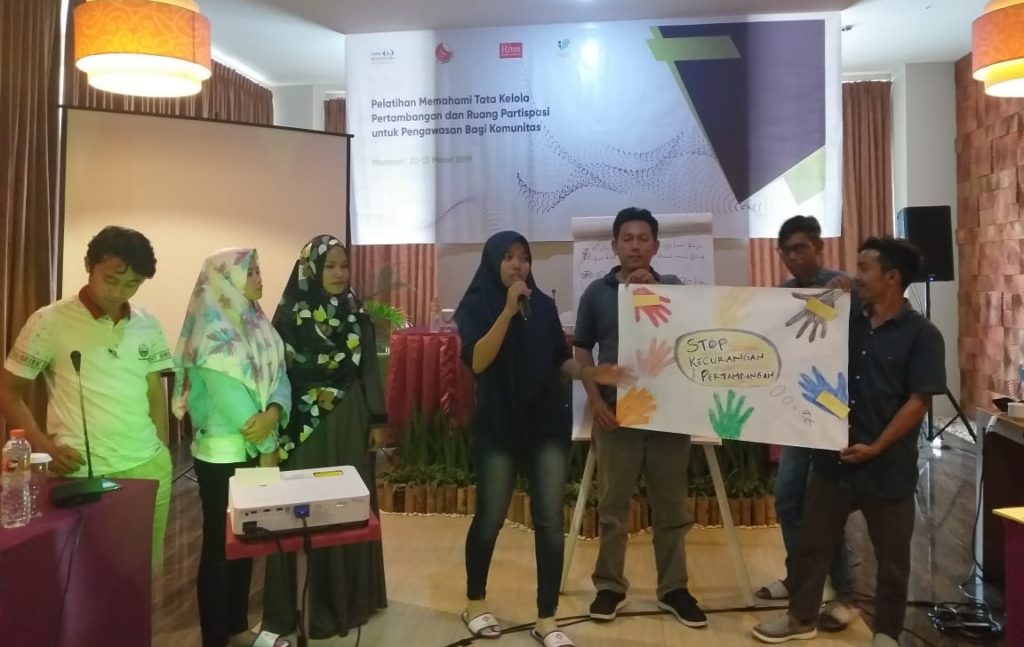
Meaningful public participation is critical in monitoring mining operation. It is particularly important for West Nusa Tenggara, one of the biggest coppers producing provinces in Indonesia. Per 2019, there are 217 mining permits in the province, according to the data of Provincial Agency of Energy and Mineral Resource.
Huge number of the mining permits, in one hand generate both tax and non-tax revenue for the province. The industries, particularly non-metal mineral, has absorbed at least 1,140 employees (Provincial Statistic Agency, 2014). Mining sector presumably have contributed up to 20% of local economy. In another hand, the sector has triggered environmental degradation and also negatively affected the economic and social life of the community, especially the ones living near the mining area.
Rizky Ananda, Program Manager and researcher of PWYP Indonesia, explained that knowledge about mining company’s obligation is critical for the community to be able to monitor their compliance, including to implement good mining practices. It’s emphasized in the two-day community training, entitled “Understanding the Mining Governance and the Room for Public Participation”, held last 20-21 March in Mataram, the capital province of West Nusa Tenggara.
“Mining companies have financial obligation to pay the land rent, royalty, and tax for their mining operation. Land rent and royalty are paid to central government which then being transferred to the province and district under the scheme of Revenue Sharing Fund. Other obligations include allocation of reclamation and post-mining fund as well as its implementation,” said Rizky.
“Public participation is guaranteed in the process of drafting the reclamation and post-mining plan, as regulated in the Ministerial Decree number 1827 K/20/MEM/2018. Mining permit holders must consult with the community, given that community is directly affected by mining activities,” affirmed Rizky.
Access to Information as a Precondition of Meaningful Public Participation
One of the conditions for meaningful public participation in mining monitoring is an access to reliable information. Dwi Arie Santo, Coordinator of SOMASI NTB-Mataram based civil society organization for transparency issues, who also facilitated the training, explained that public is able to obtain public information by requesting such information to the authorized agencies. “Each Indonesian society is entitled to the right to information, which is guaranteed by the 2008 Pubic Information Disclosure Law along with its technical regulation,” said Aries.
According to Aries, there are three important actors in implementing the information openness as mandated by the law. First, public agencies, including executive, legislative, judicative and other state funded agencies as the owner or administrator of the information. Second, information user/seeker, namely citizen or Indonesian legal entity who request public information as regulated under the 2008 law. Third, Information Commission as a mediator or judge in the dispute. Information Commission is an independent agency which is mandated to implement the Public Information Disclosure Law.
Reflecting from the experiences of SOMASI, Aries identified a number of issues related to the mechanism of information requests. Public still has difficulty to access information freely, due to the discriminative attitude of the public agencies toward individual who request the information. The quality of information given is relatively poor. The process is time consuming and also certain fee is applied.
Mining Licensing Document as a Publicly Accessible Information

The 2008 Public Information Disclosure Law specifically stated that public agencies must provide certain public information at any time, including: the list of public information, the decision of the public agencies and its consideration, the policy of the public agencies and its supporting documents and the agreement with the third parties.
Related to the mining licensing documents, Rizky further exemplified several documents which categorized as publicly accessible information. First, the decree of mining permit issued by governor or minister, in accordance with their authorities. This document generally contains the following information: name of permit holders, location of mining concession and its coordinates, mining area, company ownership and rights and obligations of permit holders.
Second, document of environmental impact assessment (EIA), one of the licensing requirements. It’s obliged for every business activity which might affect the environment in a substantial manner to have said an EIA document.
Third, document of environmental management efforts and environmental monitoring efforts (UKL-UPL). This document is mandatory for business activity which is not required to have an EIA document.
Fourth, document of reclamation and post-mining plan. Reclamation plan is ideally prepared based on the agreed environmental document. While post-mining plan have to drafted based on the feasibility study and environmental document. Both documents are submitted along with the submission of mining permit in the production stage to minister or governor, in accordance with their authorities.
Fifth, document of technical consideration. This document is issued by Ministry of Energy and Mineral Resources and the Provincial Agencies in the sector for its decision to issue the mining permit.
Citizen Journalism as an Alternative Media to Voice People Aspiration

Asri Nuraeni, Communication Officer of PWYP Indonesia, shared an alternative instrument for the community to voicing their cause, namely citizen journalism. Citizen journalism could accommodate people voice which is neglected by the main stream media. “The content of today main stream media is centered at Jakarta’s issue. Meanwhile, important issues of other areas are not raised by national media,” said Asri.
Following the growth of internet usage in Indonesia, community could easily collect, report, analyze and produce news and information. Community could establish their own media based on their needs.
“Geographical wise, it’s easy for the community to monitor mining activities operating near their surroundings. The issue is to spread the findings to wider audiences. Citizen journalism could fill this gap, so that the voice of the impacted community is amplifies stronger,” added Asri.